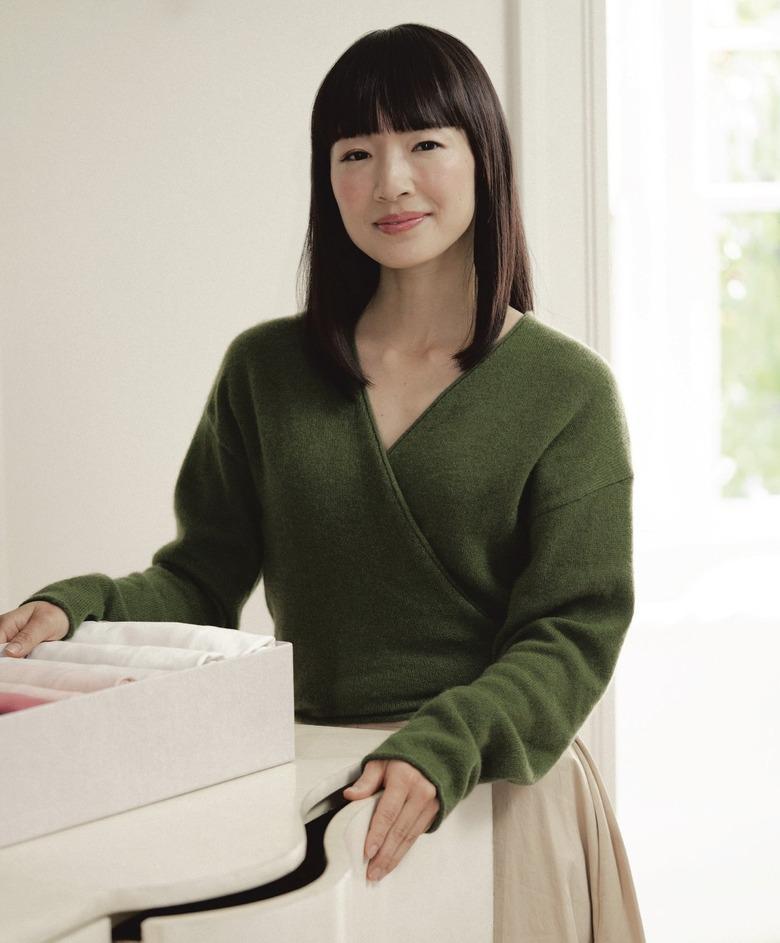3 Important Lessons We Learned From Marie Kondo's New Book, "Kurashi At Home"
If there's anyone who knows how to stay organized and tidy, it's Marie Kondo. After all, as the author of The Life-Changing Magic of Tidying Up, star of Netflix's Tidying Up with Marie Kondo, and founder of the KonMari Method, she's singlehandedly spearheaded the popular idea of only keeping things that "spark joy" — something that's inspired millions of people to tidy up their lives.
However, contrary to popular belief, tidying up isn't just about organization. In her newest book, Marie Kondo's Kurashi at Home: How to Organize Your Space and Achieve Your Ideal Life, Kondo shows us how the art of tidying can pave the way for your ideal kurashi, or "way of life," regardless of your home.
Ahead, discover the top three things we learned from Kurashi at Home.
1. Your lifestyle isn't defined by your space.
In the very first chapter of her book, Kondo presents a concept that challenges the typical notions of an "ideal" lifestyle. It debunks what said lifestyle actually involves, and ultimately, what is required to create it.
Case in point: It's easy to think that a certain type of lifestyle requires a certain type of space. After all, if your home has specific features, you'll finally be able to lead the life you want ... right? Well, not necessarily.
As Kondo notes in her book, "[T]he ideal lifestyle refers to what we do, not to where we live." In other words, lifestyle is molded by our daily habits, actions, and behaviors — not our physical spaces.
In fact, when Kondo's clients tidy up their homes, the most significant change they experience is how they spend their time at home. "Through these changes, they come to love the space in which they live, regardless of whether it matches their ideal," writes Kondo.
By recognizing that an ideal lifestyle doesn't rely on a specific space, you'll have more freedom to create the life you desire.
2. Each room can offer an experience that fuels your ideal lifestyle.
When it comes to the purpose of each room, what comes to mind? If you're like most people, you likely associate each space with a specific task, like cooking in the kitchen and working in the office. But after reading Kondo's chapter on visualizing your ideal home, you'll be inspired to view each room as an opportunity to create experiences.
Take your entranceway, for example. It's the area that greets both you and your guests. How does it make you feel? How do you think it makes your guests feel? If you suspect it causes not-so-desirable emotions, try making it more welcoming. As Kondo says, "The entrance to your home is like the gate to a shrine."
In the following pages, Kondo breaks down each room and the experiences it can bring. For instance, your living room can encourage conversation and your kitchen can make cooking (and eating!) fun. The office can be a space of practicality and joy, while the bedroom is there to help you recharge.
Essentially, when you design a room based on your ideal experiences, you'll also pave the way for your ideal lifestyle.
3. It’s okay if everything sparks joy.
Yes, really!
Contrary to popular belief, you don't need to be a minimalist to lead an organized and tidy life. "If everything still sparks joy even after you've tidied up, that's just fine," says Kondo.
In this scenario, she recommends fine-tuning your storage methods instead. Kondo goes on to explain actionable tips for learning how to store items in a way that makes you happy. (We're looking at you, DIY "Hikidashi" boxes.)
In either case, remember that a tidy and ideal lifestyle will look different for everyone. What's most important is that you prioritize what truly sparks that joy.
To learn more about Kurashi at Home, you can order the book here.

